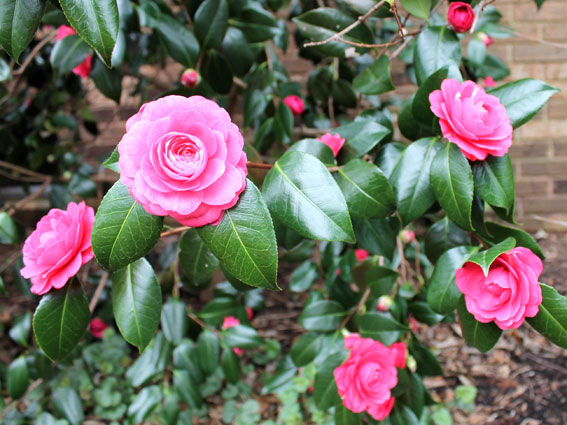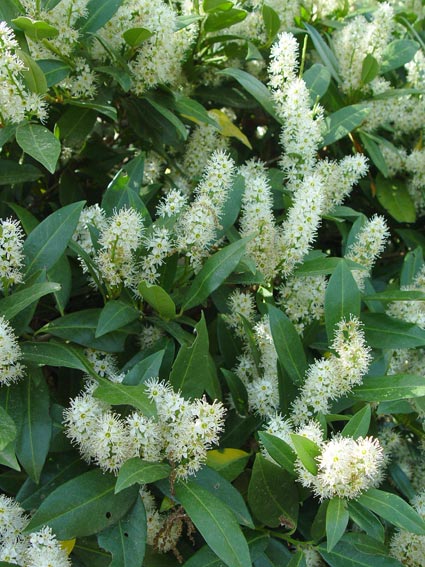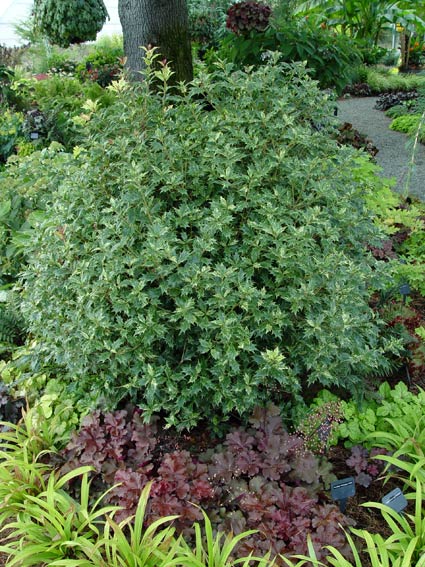The Five Best New Trees and Shrubs of 2021
Looking to add some new tree and shrub varieties to your garden? Check out this list of our favorite new plants of 2021.
Planting in the shade has typically consisted of azaleas and rhododendrons —two of the most familiar evergreen flowering shrubs that tolerate low-light settings. These, along with yews (Taxus), boxwoods (Buxus), Japanese andromeda (Pieris), and mountain laurels (Kalmia) are staples along the north- and east-facing foundations of US houses. While these might be the familiar choices, they’re far from the only shrubs that will do well as low light plants.

Camellias have glossy leaves and produce flowers that look much like roses, but without the fragrance. © George Weigel
In milder winter regions, Southern gardeners depend upon camellias in shadier spots. These glossy, broad-leafed evergreens produce showy rose-like flowers that appear in very late fall or late winter into early spring, depending on the variety. With the introduction of hardier types such as the ‘Winter’, ‘Ashton’, and ‘April’ series, camellias are now available to gardeners in regions as cool as Zone 6. Plants can be kept pruned in the 4- to 5-foot range or left to grow into small trees. The flowers are mainly white, pink, and deep rose.

Cherry laurel is a durable, shade-tolerant broadleaf evergreen that produces white, bottle-brush flowers in early spring. © George Weigel
Cherry or English laurel (Prunus laurocerasus) is another glossy evergreen (it has pointed leaves) that is fast becoming a “safer” choice in more northerly areas as winters stay milder. Cherry laurels get bottle-brush-like spikes of white flowers in spring. Both ‘Otto Luyken’ and ‘Schipkaensis’ are popular cultivars that can be kept in the 4- to 6-foot range. These are rated to Zone 6 cold-hardiness zones.
A third previously "southern" plant that’s been catching on farther north is Nandina or heavenly bamboo. The fall-fruiting species (Nandina domestica) grows 6' tall, but now there are several sterile, compact, dwarf varieties, including ‘Firepower’, ‘Moonbay’, and ‘Harbour Belle’ All hardy to Zone 6, nandinas stay mostly evergreen in winter and the foliage takes on various brilliant shades of red in winter and spring. Given a protected microclimate near a brick or stone wall, these may even overwinter in Zone 5, albeit with winter browning that can be trimmed off in spring.
One of the most distinctive shade-preferring broad-leaf evergreens is a holly look-alike called Osmanthus heterophyllus ‘Goshiki.’ This slow-growing shrub has spiny leaves like a holly, but the leaves are beautifully variegated white and green and it has pink young shoots. In 10 years, it’ll grow to about 4 feet tall and wide without any pruning. Give it another 10 years, and it’ll be about 6 feet tall and wide. It’s hardy to Zone 6.

Osmanthus ‘Goshiki’ is a slow-growing evergreen that looks like a variegated holly. © George Weigel
One of the most distinctive shade-preferring broad-leaf evergreens is a holly look-alike called Osmanthus heterophyllus ‘Goshiki.’ This slow-growing shrub has spiny leaves like a holly, but the leaves are beautifully variegated white and green and it has pink young shoots. In 10 years, it’ll grow to about 4 feet tall and wide without any pruning. Give it another 10 years, and it’ll be about 6 feet tall and wide. It’s hardy to Zone 6.
Looking for a needled evergreen? Consider dwarf Hinoki cypress (Chamaecyparis obtusa) as an alternative to the common yew. The cultivar ‘Nana Gracilis’ makes a particularly nice upright 7-by-5-foot specimen between east-facing windows or at the eastern corners of a house. Hinoki cypresses come in an assortment of sizes and shapes and are hardy in Zones 4-8.
For something low under the windows, try Russian cypress (Microbiota decussata), a low spreader with a layered habit, soft needles, and olive-green color. These grow only a foot or so tall but can spread 5 to 6 feet. They’re hardy to Zone 3.
Or consider sweetbox (Sarcococca hookeriana var. humilis), which is a short, creeping broad-leaf evergreen with upright pointed leaves. It grows only about a foot tall but spreads to make an attractive groundcover. Its small, white, early-spring flowers are very fragrant. Hardy to Zone 6.
And if you really want something that looks like a yew, consider the Japanese plum yew (Cephalotaxus harringtonia). These have a more graceful habit (‘Duke Gardens’ grows 3-by-5 feet) and aren’t nearly as attractive to deer as the common yew. Hardy to Zone 6 and maybe Zone 5 with winter protection.
There’s no rule that says you have to line your whole foundation with evergreens. It’s OK to mix in at least a few shade-tolerant flowering shrubs, especially if you have no exposed concrete or block foundations to hide. Here are five choices to consider:
Pay attention to the sizes listed on the label, then space your new plants accordingly so they don’t block any windows or grow into the house or each other.